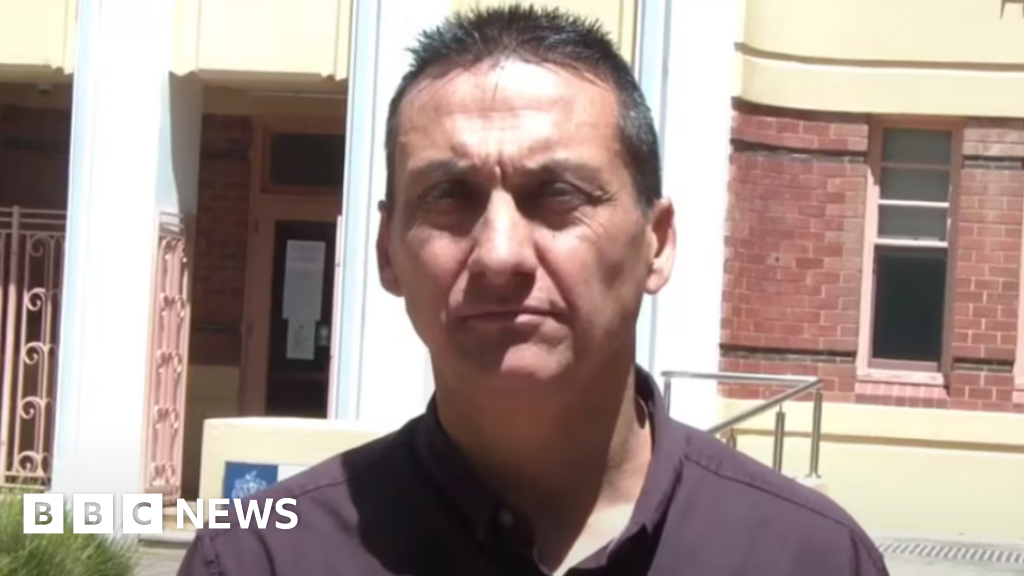The underwater spectacle of Ningaloo Reef, the world's largest fringing reef located on Australia's north-west coast, is currently facing a dire ecological crisis due to marine heatwaves. This pristine natural wonder, celebrated for its vibrant marine life including whale sharks and manta rays, is turning into a ghostly underwater landscape as tropical waters warm up faster than ever before.
Experts are sounding alarms over the latest reports of coral bleaching that have swept through this ecological treasure, which attracts around 200,000 tourists annually. The bleaching is due to high sea temperatures reaching alarming levels, primarily linked to climate-change driven factors. Paul Gamblin, head of the Australian Marine Conservation Society, likened the situation to “a raging underwater bushfire,” emphasizing the unprecedented and devastating nature of this event.
The current heatwave is part of an ongoing global crisis affecting more than 80% of the Earth’s coral reefs, as revealed in the fourth global bleaching event. With rising ocean temperatures first impacting the Caribbean, Ningaloo was initially spared last year but has since faced severe heat stress during this summer.
Marine researchers, such as Dr. Kate Quigley of the Minderoo Foundation, explain that coral bleaching can be visualized as a sickness in coral due to the breakdown of symbiotic relationships with algae that provide color and sustenance. The disruption caused by warm waters places corals at great risk, and climate predictions show that prolonged warming has stalled temperature drops, further alarming scientists.
Tourists expressing deep sadness as they witness the decaying coral emphasize the emotional toll. Experiences like “snorkeling on a corpse” encapsulate the impact not just on coral but on local communities reliant on eco-tourism for their livelihoods. There is growing concern amongst residents that continuous bleaching may deter visitors and cripple the local economy.
Compounding the issue is the ongoing expansion of fossil fuel projects along the coast, further exacerbating climate issues, while local governments maintain questionable support for these industries despite a clear threat to natural wonders like Ningaloo. The juxtaposition of supporting fossil fuels while environmental landmarks suffer highlights the ongoing struggles between the economy and ecological preservation.
In response to this catastrophe, marine scientists are exploring innovative solutions. Dr. Chris Roelfsema is utilizing drone imagery and photo mapping to track coral health, while others like Dr. Quigley are experimenting with coral breeding to assess temperature tolerance. However, concerns linger that these measures amount to mere temporary fixes in the overarching fight against climate change and rising emissions.
As marine ecosystems teeter on the brink, experts echo a call to action for more robust responses akin to those seen in terrestrial wildfire management, urging that awareness and urgent measures come to the forefront of conservation efforts against the impending challenges of climate change.
Through collaborative research and enhanced conservation strategies, local communities, scientists, and tourists alike hope to preserve this vibrant underwater paradise before it's lost to the effects of an ever-warming planet.
Experts are sounding alarms over the latest reports of coral bleaching that have swept through this ecological treasure, which attracts around 200,000 tourists annually. The bleaching is due to high sea temperatures reaching alarming levels, primarily linked to climate-change driven factors. Paul Gamblin, head of the Australian Marine Conservation Society, likened the situation to “a raging underwater bushfire,” emphasizing the unprecedented and devastating nature of this event.
The current heatwave is part of an ongoing global crisis affecting more than 80% of the Earth’s coral reefs, as revealed in the fourth global bleaching event. With rising ocean temperatures first impacting the Caribbean, Ningaloo was initially spared last year but has since faced severe heat stress during this summer.
Marine researchers, such as Dr. Kate Quigley of the Minderoo Foundation, explain that coral bleaching can be visualized as a sickness in coral due to the breakdown of symbiotic relationships with algae that provide color and sustenance. The disruption caused by warm waters places corals at great risk, and climate predictions show that prolonged warming has stalled temperature drops, further alarming scientists.
Tourists expressing deep sadness as they witness the decaying coral emphasize the emotional toll. Experiences like “snorkeling on a corpse” encapsulate the impact not just on coral but on local communities reliant on eco-tourism for their livelihoods. There is growing concern amongst residents that continuous bleaching may deter visitors and cripple the local economy.
Compounding the issue is the ongoing expansion of fossil fuel projects along the coast, further exacerbating climate issues, while local governments maintain questionable support for these industries despite a clear threat to natural wonders like Ningaloo. The juxtaposition of supporting fossil fuels while environmental landmarks suffer highlights the ongoing struggles between the economy and ecological preservation.
In response to this catastrophe, marine scientists are exploring innovative solutions. Dr. Chris Roelfsema is utilizing drone imagery and photo mapping to track coral health, while others like Dr. Quigley are experimenting with coral breeding to assess temperature tolerance. However, concerns linger that these measures amount to mere temporary fixes in the overarching fight against climate change and rising emissions.
As marine ecosystems teeter on the brink, experts echo a call to action for more robust responses akin to those seen in terrestrial wildfire management, urging that awareness and urgent measures come to the forefront of conservation efforts against the impending challenges of climate change.
Through collaborative research and enhanced conservation strategies, local communities, scientists, and tourists alike hope to preserve this vibrant underwater paradise before it's lost to the effects of an ever-warming planet.



















